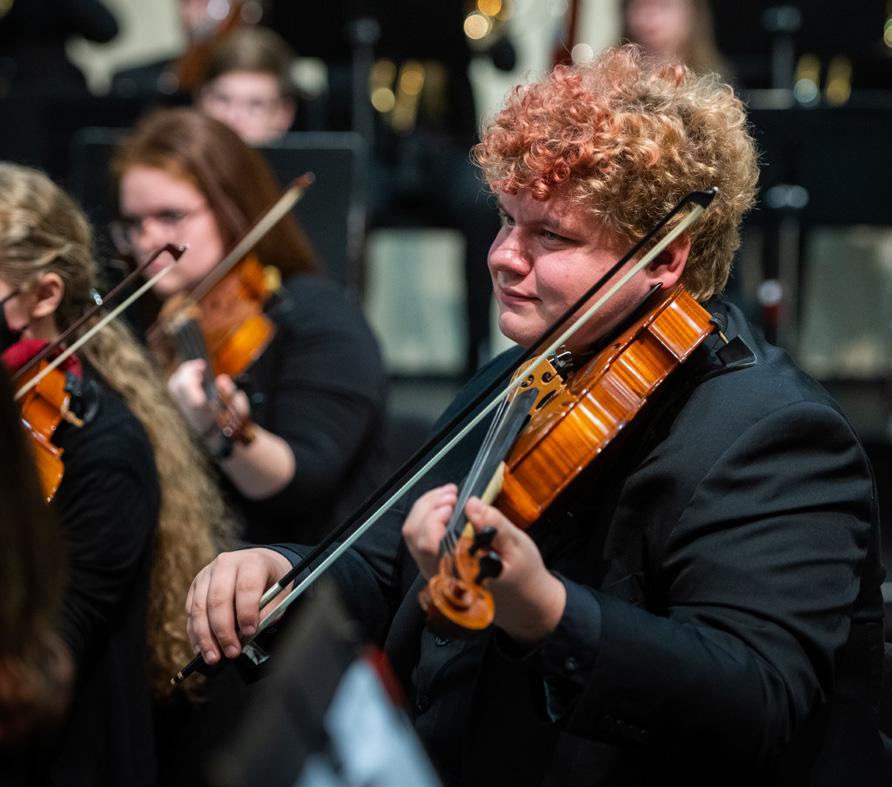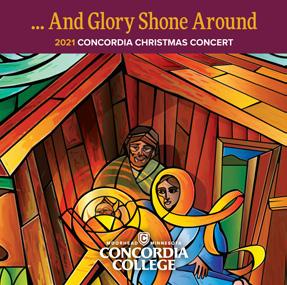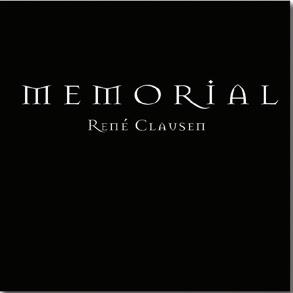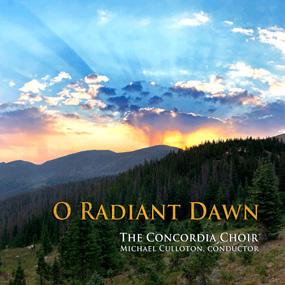Tour Program 2022



You can play serious music and also be serious about science, business, politics, law – or any other subject. The status of Concordia’s music program, coupled with its ability to grant the Bachelor of Music degree, tells you that music is a college cornerstone. But it doesn’t tell the whole story about the importance of music at Concordia. While approximately 200 students major in conservatorylevel voice and instrumental music, composition, and music education at Concordia, each week 700 private music lessons are given in the college’s dozens of music studios. From the pianist who goes on to study piano pedagogy in graduate school to the choir member who becomes a film actor to the violinist who plans to be a pediatrician, nearly one-third of all Concordia students participate in the music program. Concordia’s worldwide musical reputation translates into opportunities for students to perform in great concert halls around the nation and the world, regardless of their major.



Program to be selected from the following:
Rockwell Reflections
I. Introduction: Artist Facing a Blank Canvas
II. Moderato espressivo: Stay-at-Homes
V. Andante maestoso: Peace Corps
Violin Concerto


I. Allegro maestoso
II. Andante semplice
III. Allegro molto
Stella Sung (b. 1959)
Samuel Coleridge-Taylor (1875-1912)
Dr. Sonja Bosca-Harasim, violin
Dance of the Yao People ..... Liu Tieshan [ ] (b. 1923) and Mao Yuan [ ] (b. 1926)
Symphony No. 2 “Resurrection”


I. Allegro maestoso. Todtenfeier (Funeral Rites)
Gustav Mahler (1860-1911)
“I love to tell stories in pictures. The story is the first thing and the last thing.” – Norman Rockwell
For nearly 60 years through the middle of the 20th century, Norman Rockwell was America’s most celebrated illustrator. While his talents as a draftsman and a painter were exceptional, his genius was the ability to visually grab the attention of his audience and pull them into a story he wanted to tell. At their best, Rockwell’s paintings tell stories that transform ordinary moments of life into memorable ones: the small but important triumph, the forgivable folly and the befuddling predicament. Although both Rockwell and his audience recognized that the world he created in his paintings was idealized, it nevertheless represented their honest aspirations to be good, to appreciate the best in life and, if possible, manage the rest with humor and tolerance.
For Rockwell Reflections, Stella Sung chose five seminal paintings by Norman Rockwell to use as points of departure for her compositions. Like Rockwell’s paintings, these compositions have a strong narrative quality though listeners are free to imagine their own stories and illustrate them with eyes closed.
“Meeting deadlines and thinking up ideas are the scourges of an illustrator’s life.” – Norman Rockwell
This painting is an unusual self-portrait. Rockwell does not show us his likeness; instead, the artist lets us look over his shoulder at a dilemma that ruled his working life. With clarity and wit he communicates his exasperation through such telling details as the head scratch, the splayed shirt collar, the upside-down horseshoe and the rejected sketches piled on the floor.
Sung notes, “Artist Facing a Blank Canvas shows the dilemma that all artists, whether they be painters, writers, composers, choreographers or designers, face at some point in time: What do you do next? In this piece, I felt that a whimsical setting would be appropriate. Thus, there is the ‘stop and go’ feeling in the music –and the first reiteration of the ‘Norman Rockwell’ theme; the musical pitches of F, up a step to G, up to E, and down to C. This is the musical ‘signature’ that is found throughout all of the pieces.”
In this charming scene, a boy and his grandfather seem to be lost in a reverie as they gaze out at a schooner leaving the harbor for open water. For the child such journeys are yet to come, for the grandfather the journeys are memories to be savored. Rockwell elaborates his theme with a swirl of gulls above the two figures. Birds in flight are an age-old metaphor for flights of imagination and spirit.
In this work, Sung imagined that the grandfather would be telling the boy a tale of his own days at sea. Hence, a middle section in the music is set in a kind of sea chantey, a musical round, juxtaposed by the questioning of the boy represented by the flute. The piece is imbued with a feeling of the open air, nostalgia, innocence and tales of the sea.
“In this sordid world of power struggles, politics and national rivalries, the Peace Corps seems to stand alone.” – Norman Rockwell
Rockwell was deeply affected by the turmoil of the 1960s, the racial conflicts, assassinations, Vietnam War and nuclear threat. Rockwell, though, always found a reason for optimism in young people. The Peace Corp represents this optimism in a group of profile portraits of young men and women looking up and outward toward a bright vision beyond the confines of the picture. The profile portrait composition is a reprise of his famous 1942 painting “Freedom of Worship.” Here though, the faith that Rockwell celebrates is the spirit of the next generation to make the world a better place.
In 1960, then Senator John F. Kennedy challenged students at the University of Michigan to serve their country in the cause of peace by living and working in developing countries. That vision eventually became the Peace Corps. Sung notes, “When I first saw this painting, I was struck by Rockwell’s use of color and light to portray the noble and optimistic outlook of the youth of America. And as an alumnus of the University of Michigan in Ann Arbor, I wondered what it might have been like to have heard that challenge on the steps of the Student Union. In this final piece of the Rockwell Reflections, I too, reflect on what Rockwell sought to express in this illustration, and I see in it a sense of pride, of justice, of peace, of forward looking hope.”
Accompanying artwork can be found by scanning this QR code:

In the course of his too-short life, Samuel Coleridge-Taylor rose to an iconic status well ahead of his time. Received at the White House by President Roosevelt, with an American choral society named after him and his cantata Hiawatha’s Wedding Feast (later a trilogy of Scenes from Hiawatha based on Henry W. Longfellow’s epic poem) known throughout the choral-singing world, his musical achievements were virtually unprecedented among people of African origin in Europe and America.
Coleridge-Taylor was in fact of mixed race: his mother was English, and his father was a doctor from Sierra Leone. His musical talents were likewise eclectic. Having entered the Royal College of Music in 1890 as a violinist, he emerged seven years later as a composer and conductor. His composition teacher, Charles Stanford, once told another pupil who had made a racially disparaging remark about Coleridge-Taylor that the black student “had more talent in his little finger” than the rest of the class had in their whole bodies.
He went on to become the conductor of the Handel Society and a professor of composition at Trinity College of Music and the Guildhall School of Music. But he was also a keen participant in black activism: much influenced by the African American poet Paul Laurence Dunbar, with whom he collaborated on several sets of songs and an opera, Dream Lovers (1898), he regarded it as a personal mission to help achieve equality for his race. In 1900 he was one of the organizers of the first international Pan-Africanist conference in London and he collaborated in founding a London-based newspaper, the African and Orient Review. Meanwhile, Hiawatha’s Wedding Feast (1898) achieved a popularity in Britain that could only be compared to Handel’s Messiah.
Visiting the USA in 1906, Coleridge-Taylor met the musical philanthropists Carl and Ellen Stoeckel who from that year onward held an annual Norfolk Music Festival in their “Music Shed” (seating more than 1600 people) in the foothills of the Berkshire mountains. They invited him to conduct Hiawatha at the festival in 1910, where he was received by an enthusiastic audience. The occasion gave him the chance to become reacquainted with the great violinist Maud Powell, who had already performed several of his short works for violin and piano. In discussion with Powell and the Stoeckels, Coleridge-Taylor developed the idea of writing a violin concerto based on negro spiritual themes. After he had completed the work, however, neither he nor Powell was content with it. The composer asked the violinist to send it back, saying that he was instead “writing a new work at white heat”; Coleridge-Taylor described his new work to Carl Stoeckel as an “original work, all the melodies being my own,” saying that it was “a hundred times better than the first composition.”
On receiving the replacement concerto, Powell declared that it was “like a bouquet of flowers.” She agreed to give the premiere on June 4, 1912, though the event was almost scuppered when the orchestral parts were lost during shipping (a myth that the parts had sunken on-board the cargo of the Titanic has been debunked recently). Fortunately, Coleridge-Taylor was able to produce a new set in time. Less happily, he was unable to attend the premiere himself. Overworked and exhausted – his celebrity did not extend to financial security – he died of pneumonia that September, aged only 38. On his sickbed, he apparently seemed to be conducting an imaginary performance of his Violin Concerto. Remembering his encounters with Coleridge-Taylor, the composer Havergal Brian wrote that he was “in all truth the image of the hero in his masterpiece, Hiawatha.”
The remarkably large-scale opening movement, Allegro maestoso, is a classical sonata movement, although the composer’s fondness for constantly exploring passing episodes and interpolating decoration for his soloist gives it a rhapsodic feel at times. The opening theme is immediately taken up by the soloist, each phrase of the theme decorated by Coleridge-Taylor’s inserted falling and rising arpeggios of increasing complexity, much in the manner of his popular violin encores. This is contrasted with the charming dotted second subject, Vivace, which is used extensively. Eventually the music reaches the cadenza, which the violin plays over a sustained timpani roll on D, the soloist mainly toying with the dotted rhythm. A mellifluous 2/4 Allegro molto leads to the end, the soloist now playing the first subject with the fullest tone. The charming nocturnal slow movement (Andante semplice) in 6/8 is almost completely lyrical. The opening muted strings immediately set the mood, as the violin presents the first theme, the decorated violin line weaving an enchanted reverie with the orchestra. The second section (Andantino) is heralded by an orchestral tutti which grandly introduces a new theme before the violin takes it up. The finale might be called a free rondo since the outlines of a rondo are present, but Coleridge-Taylor is constantly happy to explore little contrasted vignettes within the music, or follow his rhapsodic inclination where it takes him. Here much of the orchestration is very lightly applied, not least at the beginning. At one point there is a passing moment of drama as the maestoso first theme of the first movement briefly thunders out, and there is a passing reference to the slow movement. In this final movement, Coleridge-Taylor masterfully brings back themes from both previous movements, in cyclical fashion, and the work ends with the opening theme of the first movement.
Liu Tieshan [ ] (b. 1923) and Mao Yuan [ ]
Dance of the Yao People (simplified; traditional; pinyin: Yáozú W_q; sometimes translated as “Dance of the Yao Tribe” is one of the best known and most popular Chinese instrumental compositions of the second half of the 20th century. It was composed collaboratively by Liu Tieshan and Mao Yuan in 1952, inspired by the long drum dance, a form of traditional festival music of the Yao people of southern and southwest China. It premiered in Beijing in 1953.
Inspired by the folk songs of Yao people, Liu Tieshan composed “Long Drum Dance of the Yao People” during a visit to Youling village, Sanpai town, Liannan Yao Autonomous County, Qingyuan, northern Guangdong province, southern China in 1951. Mao Yuan, another composer, adapted this piece into an orchestral work in 1952.
Although it was originally composed for Western instruments, it is generally performed by Chinese traditional instruments (either for solo guzheng, chamber ensemble, or orchestral). It is also performed by ensembles or orchestras of Western instruments. The work achieved wide attention in 1954, when the arrangement for Chinese orchestra by the conductor Peng Xiuwen was disseminated throughout China. Other arrangements have been made by the Taiwanese composers Cheng Si-sum and Chen Tscheng-hsiung. Musically, the work is in several sections, some slow and some fast. It begins in 2/4 meter at a slow tempo, moves to 3/4 meter, then returns to 2/4 meter in a faster tempo for the finale. In the late 20th century, the song was used as the basis for several pop songs, in both China and the United States. The first 18 notes of the 1998 song “When You Believe,” as recorded by Whitney Houston and Mariah Carey, are based on “Dance of the Yao People,” although the Chinese composers of the original work were not credited.


Gustav Mahler, one of the last great figures of the Late Romantic movement, was at the same time one of the harbingers of 20thcentury music. He had a volatile and complex personality and overtly expressed his emotional and physical suffering. That plus his Jewish birth – if not religion – was socially unacceptable to turnof-the-century Europeans who hid behind a facade of stability and superficiality. Most of Mahler’s music expresses his battle against fate and the uncertainty of existence – which may explain how he
could have written two of the Kindertotenlieder (Songs on the Death of Children) following the birth of his second daughter.
In spite of his difficult personality and Austria’s open anti-Semitism, Mahler’s ascent as a conductor was spectacular. In the summer of 1880, at the age of 20, he had his first conducting job in a minor summer theater; 17 years later he was Kapellmeister and then director of the most prestigious musical organization of the time, the Vienna Hofoper. He nevertheless found time to compose and in 1894 finished his “Symphony No. 2.”
The “Symphony” took Mahler six years to complete, not entirely surprising in light of its bizarre conception. In 1886 Mahler had made the acquaintance of Baron Carl von Weber, the grandson of the composer Carl Maria von Weber, who wanted Mahler to complete an unfinished comic opera by his grandfather, Die drei Pintos (The Three Pintos). Mahler took on the project – along with a love affair with Weber’s wife – receiving tremendous acclaim at the premiere (of the opera). After the performance, alone in his bedchamber filled with wreaths and bouquets, Mahler had a hallucinatory vision of himself on his funeral bier surrounded by flowers. The dream inspired what was to become the “Symphony’s” first movement, which he titled Todtenfeier (Funeral Rite). In part unable to decide whether the work should be a separate tone poem or the first movement of a full symphony, he became blocked and did not resume composition until the summer of 1893, finishing sketches of all but the last movement by the end of the summer. Still unsure how to finish the work, Mahler at least knew that he wanted to incorporate the human voice. The answer came to him “like a thunderbolt” during the memorial service for Hans von Bülow, who had been a close friend and promoter of his conducting career but had been unreceptive to his music. In contemplating death, Mahler perceived that the purpose of life’s pain and suffering was life beyond death. It is important to note, however, that Mahler was not thinking of resurrection in a Christian sense, but rather as the destiny of all humankind, regardless of religion, nor did he append the title to the Symphony.
Mahler wrote of the first movement, Todtenfeier: “We stand by the coffin of a well-loved person. His life, struggles, passions and aspirations once more, for the last time, pass before our mind’s eye. And now in this moment of gravity and emotion which convulses our deepest being … our heart is gripped by a dreadfully serious voice … What now? What is this life – and this death? Do we have an existence beyond it? Is all this only a confused dream, or do life and this death have a meaning?” To this Mahler added that we must answer this question if we are to live on.
Wednesday, Nov. 2 | 7 p.m. A Center For The Arts 124 W. Lincoln Ave., Fergus Falls, Minn.
Thursday, Nov. 3 | 7 p.m. Blaine High School Auditorium 12555 University Ave. NE, Blaine, Minn.
Friday, Nov. 4 | 7 p.m. Alexandria High School Gymnasium 4300 Pioneer Rd. SE, Alexandria, Minn.
Sunday, Nov. 6 | 2 p.m. Memorial Auditorium, Concordia College 901 8th St. S., Moorhead, Minn.
ConcordiaCollege.edu/Orchestra


VIOLIN 1
Jessica Jarosz | CM
Wendy Allen | CM
Gale Szczepkowski | Assoc. CM
Hadi Masood | Assist. CM
Anthony Angotti
Tori Gough
Sophie Schaumann Mackenzie Johnson Emily Beard
Zachary Catalan
Al Sterling
Ellie Chang Lindsy Noyes
Annika Griffith
Alexander Smith | PR Julia Osborne | PR
Catherine Radermacher | Assist. PR
Emma Vogel | Assist. PR Kayla Moe Jacob Shay Iris Ming Matej Kozánek
Joran Bergan
Brindie Lever Zoe Vetter
Sam Blake Jack Bulman
VIOLA
Sophie Pepple | PR Savannah Sedlacek | PR Ethan Hyvari
Emily Davis
Elyssa Benton Denise Marsh Jennifer Slack
Micah Christiansen | PR Elizabeth Ames | Assist. PR Luke Levasseur | Assist. PR Sophia Revoir
Lily Haasser
Jon Marsyla
Therese Byankuba Caroline Becker Daniel Davies Brady Burss
Juliana Conlin
BASS
Treyton Zeltinger | PR Brigham Drevlow Brynn Drevlow
Rachel Bringle | PR Russell Romine | Assist. PR Madeline Schulte Oliver Carriere
OBOE Noah Kirk | PR
Aidan Kaddatz | PR Mackenzie Fitzner | Assoc. PR Kaylin Bosworth Bella Munro
Viva Graff | PR Tyler Horne | Assist. PR Sophia Klee
Zeb Biles | PR Emma Schock | PR Ethan Brummer Zachary Chromey Ellie Wilker
Alexandra Klein
Jacob Meixner | PR
Maddie Schuette | Assoc. PR Carter Egesdal
Jessica Shaw
Adam Steinbach | PR Chase Linde
LaReena Mosbrucker
TUBA
ORCHESTRA LIBRARIANS

Tori Gough, senior librarian
Jarosz, senior librarian
Pepple, junior librarian
Emily Davis, senior manager
Carter Egesdal, junior manager
CM indicates Concertmaster PR indicates Principal
Haasser

Dr. Kevin F.E. Sütterlin is an internationally sought-after conductor and pedagogue. He belongs to Beyond Artists, a coalition of artists that donates a percentage of their concert fees to organizations they care about. He supports “WIRES” (Australian Wildlife Rescue) and the “Memphis Music Initiative” through his performances.”
Sütterlin is director of orchestral activities and opera at Concordia College, where he and his colleagues received two EMMY awards for 2016’s nationally broadcast Concordia Christmas Concert productions. The Concordia Orchestra won the prestigious American Prize competition in 2018-19 under his leadership. Sütterlin is music director of the Fox Valley Symphony Orchestra and comusic director of Sinfonietta Memphis, an ensemble that provides free concerts and educational experiences for the Greater Memphis communities. Sinfonietta Memphis’s conductors, Dr. Mathias Elmer and Sütterlin, proudly represent the orchestra’s credo: friendship through music. They also co-direct The Sinfonietta Academy for Historically Informed Performance Practice. In 2019, Sütterlin was named principal guest conductor of the Qingdao Concert Hall Symphony in China, and in 2021 honorary conductor of K-Classic Orchestras, a Korean organization dedicated to contributing to world peace through musical and cultural exchange. With a great love and passion for teaching, Sütterlin is also artistic director of the Northern Valley Youth Orchestras, and holds The Phyllis and Richard Duesenberg Endowed Orchestra Chair of the Lutheran Summer Music Academy and Festival, directing the organization’s orchestral and conducting programs.
Sütterlin has been building musical bridges across four different continents and has led his ensembles on many successful national and international tours. He has performed and taught across the globe including Austria, China, Germany, Greece, Italy, Romania, Slovenia, Switzerland, and the United States. Highlights of his upcoming guest conducting season include engagements with the National Opera of Chile Chamber Orchestra and the Brescia Music Festival Italy, among others. Sütterlin received his doctorate and master’s degrees in orchestral conducting from The University of Memphis and a bachelor’s degree in conducting from the Hochschule Luzern – Musik, Switzerland.

Dr. Sonja Bosca-Harasim, performer and educator, is associate professor of violin and viola at Concordia College and concertmaster of the Fargo-Moorhead Symphony. Additionally, she coaches chamber music and serves as string area coordinator and director of Concordia’s North Star Chamber Music Festival and Symposium, as well as its String Preparatory Program.
Bosca-Harasim maintains an active performing career locally, nationally, and internationally as a solo, chamber, and orchestral musician, including performing as guest principal 2nd violin with the Detroit Symphony and the Cabrillo Festival of Contemporary Music in Santa Cruz, Calif., as well as chamber music performances at the “Grieg in Bergen” concert series in Norway, the Library of Congress and the Kennedy Center in Washington, D.C., La Jolla SummerFest in California, and at the Soiva Music Camp in Järvenpää, Finland. Musical highlights in the 2022-23 season include performances with the Fargo-Moorhead Symphony Orchestra as well as chamber music collaborations with colleagues, guest artists and students at Concordia and in the Fargo-Moorhead area.
Prior to joining the faculty at Concordia, she performed regularly with the Houston Symphony, Houston Grand Opera, River Oaks Chamber Orchestra and Da Camera of Houston. She has performed at numerous preeminent music festivals and performs and teaches throughout the United States and Canada. Bosca-Harasim is dedicated to the performance of new music, with several composers, including Karim Al-Zand, Daniel Breedon, Benjamin Krause, Richard Lavenda, Russell Peterson and Christopher Walczak, having written pieces for her.
She began her violin studies at the age of five in the Suzuki program at Parker Elementary in Houston, Texas, and went on to attend Houston’s critically acclaimed High School for the Performing and Visual Arts. Bosca-Harasim completed her undergraduate studies at the Cleveland Institute of Music and returned to her hometown to continue her studies at Rice University’s Shepherd School of Music, where she received her Master of Music and Doctor of Musical Arts degrees. She plays a violin made in 2011 by Mario Miralles, modeled after Lin’s “Titian” Stradivarius.
Nathaniel H. Dickey | Department Chair, Trombone | B.A., B.M., Oberlin College; M.M., Rice University; D.M.A., University of Minnesota
Sonja Bosca-Harasim | Violin, Viola | B.M., Cleveland Institute of Music; M.M. and D.M.A., Rice University Ísis Jarnicki de Carvalho | Voice | B.M. School of Music and Fine Arts of Paraná; M.M. Indiana University; D.M.A Ball State University
Michael Culloton | Choral Conducting, The Concordia Choir, Vocal Music Education, Church Music | B.A., Concordia College; M.M., University of Arizona; D.M.A., North Dakota State University
David P. Eyler | Percussion, Percussion Ensemble, Marimba Choir, Percussion Methods | B.S., Frostburg State University; M.M., The Ohio State University; D.M.A., Louisiana State University
Peter Haberman | Instrumental Music Education, The Concordia Band, The Cobber Echo Band | B.M., Concordia College; M.M., University of Montana; D.M.A., University of Minnesota
David Hamilton | Voice, Diction, Repertoire, Music May Seminars, Opera Workshop, Italian | B.M., University of Iowa; M.M., The Juilliard School
Gregory Hamilton | Cello, Double Bass | B.M., Oberlin Conservatory; M.M., Northern Illinois University; D.M.A., University of Kansas
Doug Harbin | Music Theory, Composition | B.M., Taylor University; M.M., Ball State University; D.M.A., Arizona State University
Debora Harris | Flute | B.M.Ed., Bradley University, M.M., Florida State University
Jay Hershberger | Piano | B.M., University of Tulsa; M.M., Wichita State University; D.M.A., Arizona State University
Race Hoglund | Saxophone | B.M., Concordia College
Rachel Horan | Piano, Aural Skills | B.M., Concordia College; M.M., North Dakota State University
Erika Izaguirre | Trumpet, Jazz Ensemble II | B.M., University of Texas; M.M., Baylor University; D.M.A., Eastman School of Music
Holly Janz | Voice, Diction | B.M., University of Wisconsin – Stevens Point; M.M., University of Colorado – Boulder; D.M.A., University of Kansas
Grigor Khachatryan | Piano | B.M., Baylor University; M.M., University of Michigan; D.M.A., Jacobs School of Music-Indiana University
Kira Haler Knutson | The Concordia Chapel Choir, Kantorei, Cantabile, Choral Conducting | B.M., St. Olaf College; M.M., Boston University; D.M.A., University of Minnesota
Anthony Leathem | Voice | B.M., University of Hartford; M.M., New England Conservatory
Shirley Leiphon | Voice | B.S., NDSU; M.M., Boston University; D.M.A., University of Minnesota
Steven Makela | Music Theory, Composition | B.A., B.S., Bemidji State University; M.A., University of Minnesota; D.M.A., University of North Texas
Eric Martens | Classical Guitar, Jazz Guitar | B.M., Concordia College
Jeffrey Meyer | Music History, Music Theory, Global Music | B.M., Wheaton College; M.A., Ph.D., University of Minnesota
Anne Jennifer Nash | Voice | B.A., Dickinson College –Pennsylvania; M.M., The Peabody Conservatory; D.M.A., University of Michigan
Dina Neglia-Khachatryan | Violin, Viola | B.M., M.M., Jacobs School of Music-Indiana University; D.M.A., Indiana University
Douglas Neill | Bass Guitar, Tuba, Euphonium | B.S., North Dakota State University
Maisi Pedersen | Voice | B.M.E., Concordia College; M.M., Peabody Conservatory
Russell Peterson | Bassoon, Saxophone, Jazz Ensemble I | B.S., Youngstown State University; M.M., Bowling Green State University; Medaille d’or à l’unanimité, Le Conservatoire de Bordeaux
Shauna Pickens | Coordinator of Music Education, Brass Techniques | B.M., Texas Tech University; M.M., Southern Methodist University; Ph.D., Texas Tech University
Ainsley Rentfrow | Music Education | B.M., Concordia College; M.A., Concordia University
Annett Richter | Music History, Aural Skills | B.A., M.A., Martin-Luther-Universität Halle, Wittenberg, Germany; M.A., M.M., Ph.D., University of Minnesota
Callie Stadem | Harp | B.A., Augustana University; M.M., University of North Dakota
Andrew Steinberg | Organ | B.M., Concordia College, M.M. Colorado State University
Verlene “Beanie” Stotts | Symphonic Band, B.M.E. Concordia College, M.M. Clarinet Performance New Mexico State University
Stephen Sulich | Collaborative Piano, Opera Concordia | B.M., M.M., Indiana University
Kevin Sütterlin | Instrumental Conducting, The Concordia Orchestra and Opera | B.A., Hochschule Luzern, Switzerland; M.M., D.M.A., The University of Memphis
Kelley Tracz | Oboe | B.M., Kansas State University; M.M., University of Minnesota; D.M.A., PBACC, University of North Carolina - Greensboro
Karin Wakefield | Horn, Piano | B.S. Ed., University of Minnesota
Leigh Wakefield | Clarinet, Woodwind Methods | B.A., University of Minnesota; M.M., New England Conservatory of Music; D.M.A., University of Minnesota
Jessica Westgard Larson | Handbell Choirs | B.A., Concordia College; M.B.A., University of Mary
Kristen Kocher | Music Enrollment Coordinator | B.M., Concordia College
Karly Nelson | Administrative Assistant for the Music Department | B.A., Iowa State University
Wyatt Steinke | Associate Administrator and Manager for Choral Ensembles | B.A., Concordia College
Matthew Winarski | Associate Administrator and Manager for Instrumental Ensembles | B.M. Ed., University of Wisconsin-Eau Claire; M.M. and D.M.A., North Dakota State University
If you liked what you heard at today’s concert, here’s your opportunity to bring Concordia’s music home with you. You may purchase CDs featuring The Concordia Orchestra and our other ensembles and faculty soloists, as well as recordings of our renowned Christmas Concerts.


Experience the Emmy Award-winning Concordia College Christmas Concerts! The 2021 Christmas Concert features nearly 300 student musicians performing works by Dan Forrest, Cecilia McDowall, Felix Mendelssohn, René Clausen, Paul J. Christiansen, and more.
The 2019 Concordia Christmas Concert, René Clausen’s final as artistic director, features works by Charles Forsberg, Gabriel Fauré, René Clausen, and more.
The Concordia Orchestra performs Samuel Barber’s “Adagio for Strings” as a prelude to Dr. René Clausen’s original extended work “MEMORIAL,” commissioned to commemorate the tragedies of Sept. 11. This CD was recorded in New York City as part of the National American Choral Directors Association Convention.

In addition to the title selection, Concordia’s Percussion Ensemble and Marimba Choir recorded an eclectic mix including classics Carmen and Sabre Dance, folksongs from Japan and Mexico, Broadway musical Slaughter on 10th Avenue and jazz favorite Birdland

Released in 2016, this studio recording of The Concordia Band, under the direction of Dr. Peter Haberman, captures both the power and elegance of Concordia's oldest ensemble.
In its inaugural recording, the Concordia Jazz Ensemble I establishes itself as a leading regional jazz group. Several jazz styles and soloists come together for this must-have recording.


New in 2021, this two-disc collection features mostly pieces never before recorded by The Concordia Choir, including works by René Clausen, Adolphus Hailstork, Carol Barnett, Undine Smith Moore, and more. “O Radiant Dawn” is the first Concordia Choir album with Michael Culloton as conductor.

Our second compilation of folk songs, spirituals, and hymns contains audience favorites over the years, including “What a Wonderful World.” Sixteen stunning tracks of lighter fare position this recording as one of our top sellers.
